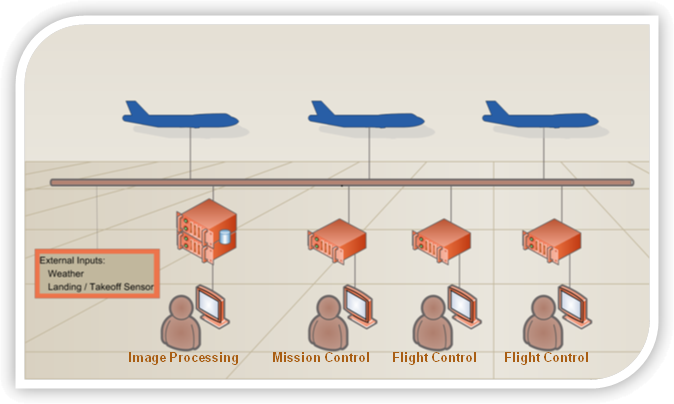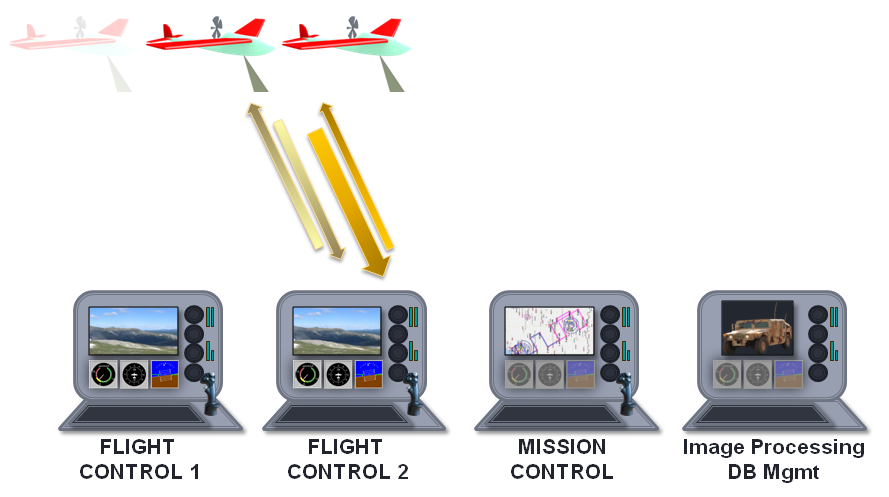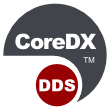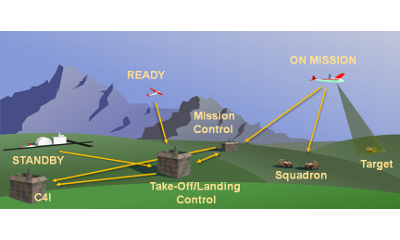CoreDX DDS in Unmanned Vehicles
CoreDX DDS provides many benefits to Unmanned Vehicle systems
Open-Standards based interoperability, Small footprint for resource constrained systems; Flexible Architectures (dynamic discovery and loose coupling); tools for Fault Tolerant systems; Data History and Persistence for dynamic classes of information; and Reliable and Best Effort transports for different classes of data are just some of the many benefits provided by CoreDX DDS.
Complex Control Systems
The value and potential of Unmanned Vehicles has been demonstrated time and again. Their ability to accomplish missions with reduced risk to human life is priceless. From dangerous military operations to hazardous material clean up, unmanned vehicles save lives. Unmanned vehicles include complex CONTROL SYSTEMS, sensors, actuators, and propulsion systems as well as data processing and management functions. They usually incorporate several microprocessors and dedicated FPGA components to meet the diverse requirements of real-time control, communications, and high-level processing. These systems have strict SIZE WEIGHT AND POWER (SWaP) CONSTRAINTS, which put significant emphasis on small footprint technologies.

Interfaces and Interoperability
Unmanned vehicles have multiple internal and external system interfaces which must be supported, such as human control interfaces, telemetry, health & status monitoring, data collection and exploitation, as well as interfaces to weather and other situational information. Each of these interfaces presents unique challenges to the system developers. Further, these systems often have INTEROPERABILITY REQUIREMENTS which address the ability to share data and control. STANAG 4586 is an example of such interoperability.
Logging and Security
As with any system of this magnitude, unmanned vehicles require robust BUILT-IN TEST and FAULT-DETECTION & REPORTING functions. These capabilities are critical to the overall maintenance lifecycle of the system and must be included in the architecture from the beginning. In many cases, strict SECURITY REQUIREMENTS addressing confidentiality, integrity and availability, must be met. Further, it is not uncommon for these systems to have SAFETY CRITICAL REQUIREMENTS as autonomous operations can present a risk to life and property. The costs associated with these requirements can be extensive, and are often directly proportional to the number of Lines of Code (LOC).

Integration and Test
Finally, the nature of these systems leads to COMPLEX INTEGRATION AND TEST environments. The multiple sub-systems are often developed independently by different sub-contractors. The internal system interfaces can be complex and difficult to verify. Open standards can help ease the integration and test activities. Further, loosely coupled communication architectures enable incremental testing with emulators and simulators acting as surrogates for missing components.
Why CoreDX DDS?
CoreDX DDS Middleware provides many features that directly address some of the most challenging and complex IT requirements present in these systems. In particular, the small footprint helps meet SWaP requirements. Significant SWaP savings can be realized by reducing the processing resources required. Further, a small foot-print is directly related to a low Line of Code (LOC) count. Many metrics are directly influenced by LOC count: For example, cost and bugs. With the smallest foot-print available, CoreDX DDS will help you reduce cost and bugs.
Another benefit of the CoreDX DDS middleware is flexibility. From the ability to tailor more than 20 different Quality of Service policies, to the dynamic discovery technology, CoreDX DDS offers system architects and software developers a wide range of customization options. The middleware supports diverse classes of data with different delivery and persistence models. The support for deadline and liveliness helps guarantee real-time system behavior.
CoreDX DDS offers robust interoperability with other RTPS enabled middleware solutions. This open-standard on-the-wire interoperability, coupled with the standardized API provides peace of mind that your system will continue to offer interoperability and portability throughout its lifecycle.








